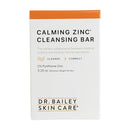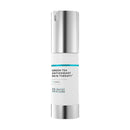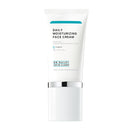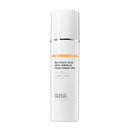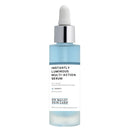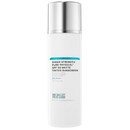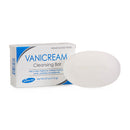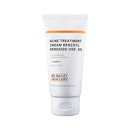Vitamin D and Sun Exposure

Vitamin D and sun exposure are common topics of discussion in my dermatology practice. You need normal to high-normal levels of vitamin D for optimal health. A number of diseases have been connected with low vitamin D levels (for a list see the Mayo Proceedings article listed below).
Is exposing your skin to the sun to get vitamin D a good idea?

The vitamin D issue is the biggest complication to the sun protection discussion. I hear questions about it all the time from my patients and you probably grapple with the same ones. Yes, you can force your skin to become a vitamin D factory for you, but there are costs and consequences. And, it's job security for my profession.
Common questions about vitamin D and sun exposure
- Should you get some sun this year to keep a healthy vitamin D level? If so, is it as easy as just going outside?
- Can you get sun exposure without harming your skin?
- The sun is a natural way to get vitamin D, so how is it possibly bad?
- Isn't a little sun exposure good for you - it makes you feel good, so how can it really be bad?
Yes, using your skin and the sun as a vitamin D factory is natural; it feels good and it seems, on first glance, like it is what Mother Nature intended. It's actually tricky to do though. Remember, too, that wrinkles are natural.
Think about it, most people you know who use vitamin D as their reason for not sun protecting their skin are taking the scorched earth approach; I see them exposing the convenient parts of their skin all day long to the sun and racking up the sun damage. It's a sure way to guarantee wrinkles and thin skin. It also puts a person at risk of skin cancer. Plus, it's no guarantee of adequate vitamin D levels.
Exposing your skin to the sun is no guarantee that you will be getting vitamin D
Reasons that sun exposure varies in the ability to make vitamin D include:
- where you are on the earth when you’re getting your sun
- what time of the day you're out
- how long you're out
- how much body surface area you’re exposing
- your inherent skin color (the amount of melanin in your skin)
And, with too much sun exposure your skin actually starts to break down the newly produced vitamin D.
You can see that the fine line you are walking is difficult to gauge. The only thing you know for sure is that you are damaging your skin's DNA and ALWAYS driving the cascade of biochemical reactions that lead to collagen breakdown, wrinkles, and skin thinning.
You’re better off taking supplements (the right ones) and seeing your doctor to get your vitamin D level measured. To create an intelligent strategy for your vitamin D needs, here's what you need to know.
Dermatologist Explains What You Need to Know About Vitamin D

You want to take vitamin D3 supplements.
The only sun rays that make vitamin D3 in your skin are the UVB rays. These are the midday mid-summer intense sunburn rays that are a big cause of skin cancer.
Winter sun and morning or late afternoon sun have very little UVB rays and they don't make much, if any, vitamin D in your skin. Those rays are still full of wrinkle- and cancer-causing UVA though.
Vitamin D production in your skin's "Vitamin D Factory" happens fast with UVB exposure. This is especially true in people with light complexions; vitamin D3 is made at the maximum levels possible within a few minutes of midday summer sun exposure. This occurs with less sun exposure than would cause skin redness. Longer sun exposure adds nothing to your vitamin D stores, but it does increase your skin's DNA damage and wrinkle fate.
The vitamin D3 that your skin makes from a sun exposure breaks down once formed if you stay in the sun. Said another way, you actually lose the vitamin D3 that you just produced. More sun is not better!
I think that everyone should get their vitamin D levels measured. I have patients with low vitamin D levels in spite of getting a lot of sun or taking a lot of vitamin D. Everybody is different so you just need to get your levels measured.
The name of the vitamin D level to test is 25-hydroxy vitamin D, abbreviated 25(OH)D.
To quote the authors of a 2013 Mayo Proceedings article regarding how to interpret your vitamin D level test results:
Vitamin D deficiency is defined as a 25(OH)D level of 20 ng/mL or less, vitamin D insufficiency as 21 to 29 ng/mL, and vitamin D sufficiency as 30 ng/mL or greater for children and adults ... maintenance of a 25(OH)D level of 40 to 60 ng/mL is ideal ... and up to 100 ng/mL is safe.
If your vitamin D level is normal, you don’t need to make any changes in what you’re doing.
The safest way to get vitamin D is by eating vitamin D-rich foods and taking vitamin D supplements.

You should eat foods that contain D3, including fish liver, fish liver oils (not happening for me!), fatty fish - including salmon (thank goodness), mackerel, and bluefish, and egg yolks.
You need to eat wild-caught fish, not farmed; studies show that in the US, farmed salmon contains only ¼ the amount of D3 compared to wild salmon from Alaska. When wild-caught Alaska salmon is on sale I stock up and freeze it.
Your dietary vitamin D supplements should be vitamin D3, not D2. I most often see 2000 IU of Vitamin D3 as the dosage recommended in the medical literature and at scientific seminars for prevention of vitamin D3 deficiency for people at risk of low levels. You should, of course, discuss this with your personal treating physician because your body and your health history make you unique. I, as a cancer patient, have been told to take 5000 IU per day by my oncology team.
What are the evidence-based health benefits of having adequate levels of vitamin D?
The Mayo Proceedings authors list them as a
decreased risk of many disorders, including certain types of cancer, mental disorders, infectious disease, cardiovascular disease, type 2 diabetes mellitus, and autoimmune disorders, associated with serum 25(OH)D levels greater than 28 to 32 ng/mL.7. It has, therefore, been argued that 25(OH)D levels should be in the range of 28 to 40 ng/mL to maximize these ... benefitsIf you're determined to supplement your oral intake of vitamin D using the sun and your skin as a vitamin D factory then be smart about it. Here's what I recommend to my patients who insist on combining their oral vitamin D supplementation with sun-induced vitamin D production:
Use your tummy skin for your vitamin D factory.
Most of my patients have very little sun damage on their tummy and I rarely find skin cancer there. Cancers on the tummy skin are relatively easy to remove surgically compared with ALL other areas of your skin. Plus, you can watch your tummy for suspicious changes. You can't so easily watch your back, so don't use your back. Again, definitely don’t use your face, legs, hands, or other areas that have already had too much sun and thus are at greater risk for skin cancer. These areas are often thinned as well making surgery more complex. Plus, they are the parts that show wrinkles and age spots, and that may matter more to you.
To use the tummy skin to produce vitamin D, I recommend starting at 5 minutes 3 to 5 times a week using noon sun; noon tummy sun bathing may be impractical, but it’s not impossible. I need to reemphasize that I only endorse this as a last resort with my patients - I'd much rather everyone try to get their vitamin D levels up with diet and vitamin D3 supplements!
What's the bottom-line regarding sun exposure and vitamin D levels for your health?
My recommendation is to sun protect your skin; use supplements and your diet to maintain a healthy vitamin D level. Click here for the sunscreen and sun protection products that I trust, personally use, and recommend for my patients. My patients and I have put these to the test and they work - I see the results on their skin every day. Remember to wear a hat and sun-protective clothing and to aim for the shade when possible too. No matter how much sun damage you already have it is possible to reverse some of the damage with good skin care. Click her to learn more.
“Since using Dr. Bailey's Green Tea Antioxidant Skin Therapy my sun damaged skin has become much healthier.” Steve W, Sebastopol, C
Author: Dr. Cynthia Bailey M.D. is a Board Certified dermatologist practicing dermatology since 1987. She has done well over 200,000 skin exams during her career and authors the longest running physician written skin health blog in the world.
Reference: Vitamin D and Sun References
Vitamin D for Health; A Global Perspective. Arash Hossein-nezhad, MD, PhD, Michael F. Holick, PhD, MD. Mayo Clinic Proceedings. Volume 88, Issue 7, Pages 720–755, July 2013
Vitamin D metabolism. Bodo Lehmann & Michael Meurer, Dermatologic Therapy, Vol 23, 2010, 2-12
Effects of ambient sunlight and photoprotection on vitamin D status. Joseph W. Diehl & Melvin W. Chiu, Dermatologic Therapy, Vol. 23, 2010 48-60
Photo attribution, thanks and gratitude to Joe Shlabotnik


